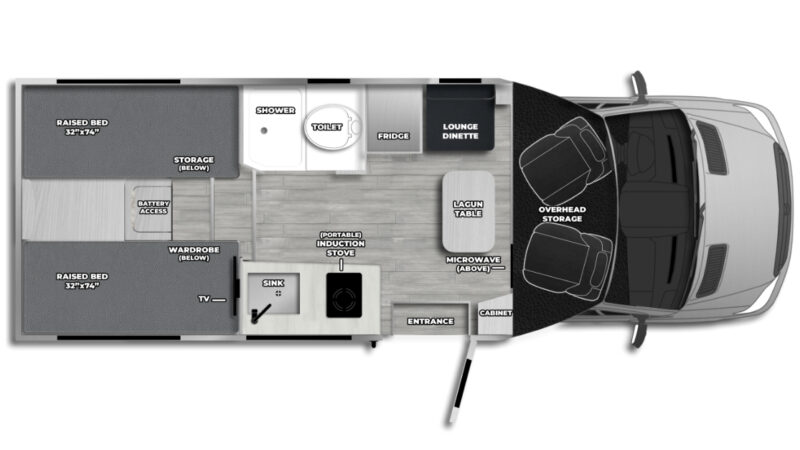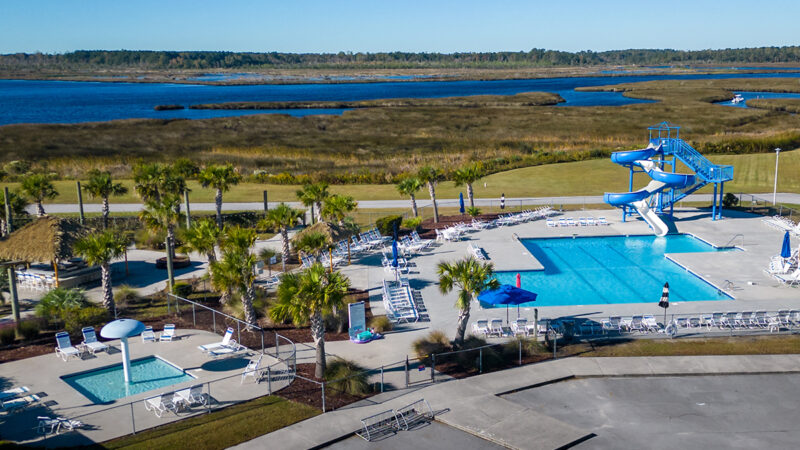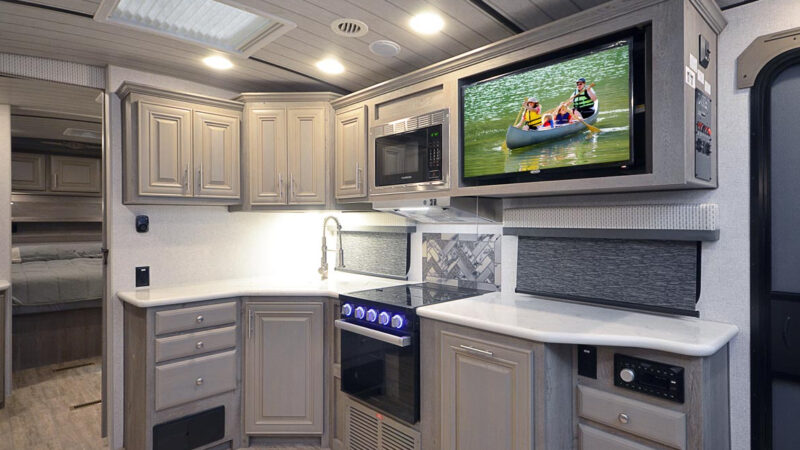The Pros and Cons of Using a Catalytic Heaters in an RV
As winter camping continues to grow in popularity, more RV owners are looking for ways to heat their rigs during cold-weather outings. Many have added a catalytic heater to their vehicles, giving them a safe, efficient option for extending their camping season. But what exactly is a catalytic heater, and what makes it a good option for use in an RV? Read on to find out.
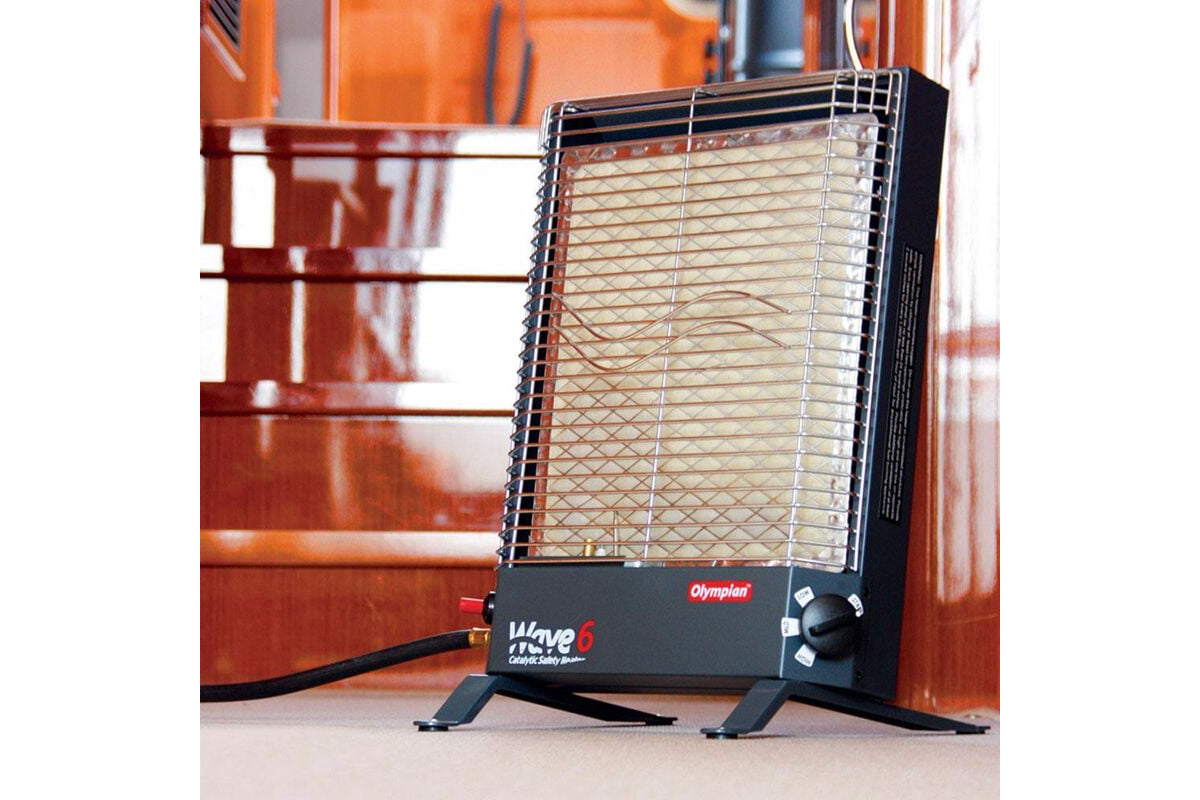
Photo Credit: Camco
What is a Catalytic Heater?
A catalytic heater is a highly efficient device that generates warmth through a chemical reaction known as catalysis. These furnaces use propane as a source of fuel, but the catalytic process produces a surprising amount of heat without a flame. This results in a lot of warmth in a concentrated area without the fear of igniting a fire.
The catalytic chemical process doesn’t require oxygen to burn, eliminating the need for excessive ventilation. These devices don’t produce noxious fumes or gases, either, making them safer than most other forms of heating. These qualities make them ideal for use in an enclosed space like an RV, although most manufacturers recommend cracking the window as a safety precaution.
Unlike most furnaces, a catalytic heater evenly transfers heat throughout the space it operates in and even warms nearby objects. By contrast, traditional models tend just to heat the air, which is much less efficient and can lead to unexpected temperature variations.
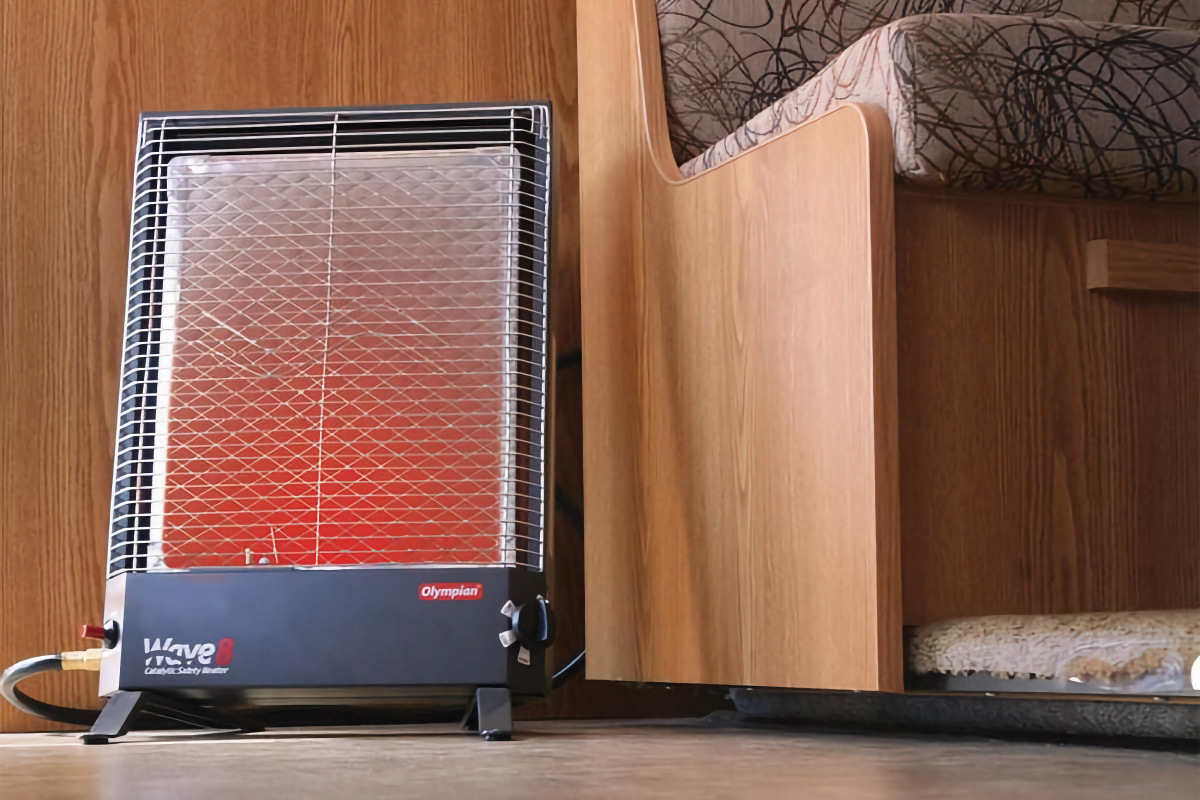
Photo Credit: Camco
How Does a Catalytic Heater Work?
The chemical reaction produced in a catalytic heater is fairly simple but highly efficient when it comes to generating heat. That reaction occurs when propane flows onto the catalytic surface, causing the atomic bonds of the fuel molecules to break down, creating heat as a byproduct to the process. That heat is released in a consistent fashion that provides radiant warmth to the surrounding area.
Because the catalytic surface doesn’t deteriorate or burn in any way, it remains mostly unchanged by the chemical reaction. This allows it to be used repeatedly, ensuring efficient, reliable performance over many years of use.
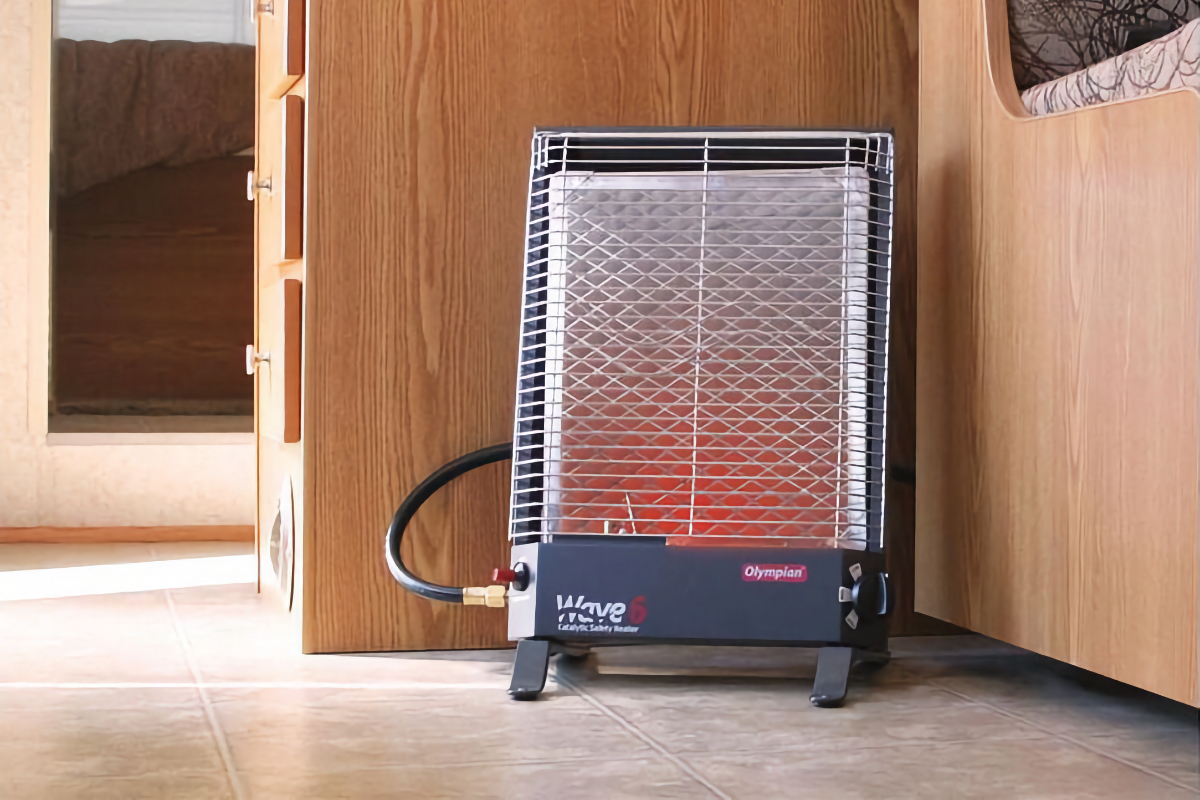
Photo Credit: Camco
The Pros and Cons of Using a Catalytic Heater
We’ve already touched on a number of the benefits of using a catalytic heater, most notably that they are more efficient and safer than traditional models. These devices burn propane at a very slow rate, creating a lot of heat without using much fuel. Additionally, the lack of a flame dramatically reduces the chances of starting a fire, and no toxic fumes are major benefits, too.
Another advantage of a catalytic heater is that it works well even at higher altitudes. Some types of furnaces are either less efficient or don’t work at all when camping at heights above 5,000 feet, but a catalytic heater continues to function even when the air gets thin. If your camping adventures take you high into the mountains, you may want to consider adding one of these models to your rig.
There are a few downsides to using this type of heater. For instance, while they produce plenty of heat, the warmth doesn’t spread very far from the device itself. Conversely, a traditional furnace is more likely to be connected to fans, vents, and heating ducts, allowing it to push the warmth all around the RV. You’ll also want to keep the catalytic elements covered when not in use, keeping them protected from the elements or anything else that could cause damage.
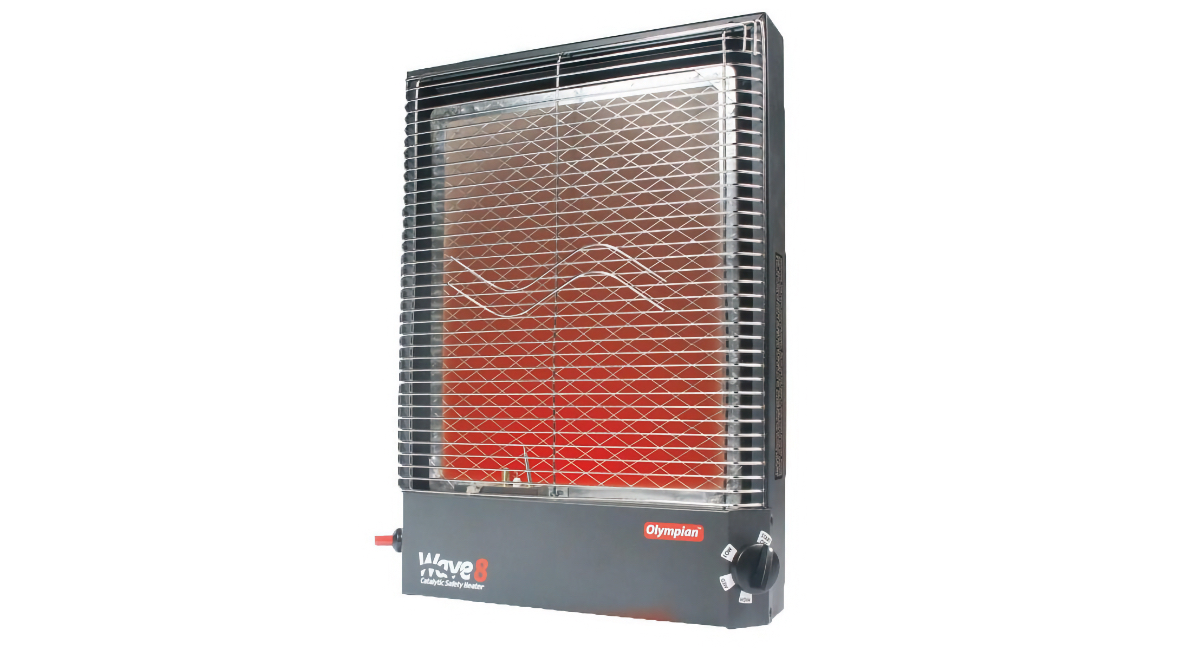
Photo Credit: Camco
Where to Buy
Camco makes several catalytic heaters specifically for RV use. Those models make up the Wave Series, several of which are on sale at Camping World.
The post The Pros and Cons of Using a Catalytic Heaters in an RV appeared first on RV.com.


